Toyota Corolla (E120) 2002–2008 Repair Manual / Diagnostics / Sfi system / Random/multiple cylinder misfire
detected / Circuit description
Toyota Corolla (E120): Circuit description
When a misfire occurs in the engine, hydrocarbons (hc) enter the exhaust in high concentrations. If this hc concentration is high enough, there could be an increase in exhaust emissions levels. High concentrations of hc passing through the catalyst also cause to temperature of the catalyst to increase, possibly damaging the catalyst. To prevent this increase in the emissions and limit the possibility of thermal damage, the ecm monitors the misfire rate. When the temperature of the catalyst reaches a point of thermal degradation, the ecm will blink the mil. For monitoring misfire, the ecm uses both the camshaft position sensor and crankshaft position sensor. The camshaft position sensor is used to identify misfiring cylinders and the crankshaft position sensor is used to measure variations in the crankshaft rotation speed. The misfire counter increments when crankshaft rotation speed variations exceed threshold values.
The ecm illuminates the mil if the misfiring rate exceeds a threshold value and could cause emissions deterioration.
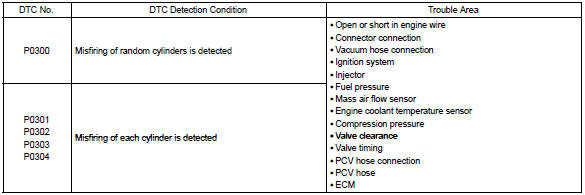
Hint
: when codes for a misfiring cylinder are recorded repeatedly but no random misfire code is recorded, it indicates that the misfires have been detected and recorded at different times.
Reference: inspection using oscilloscope with the engine idling, check the waveform between terminals #10 to #40 and e01 of the ecm connectors.
Hint
: the correct waveform is as shown.
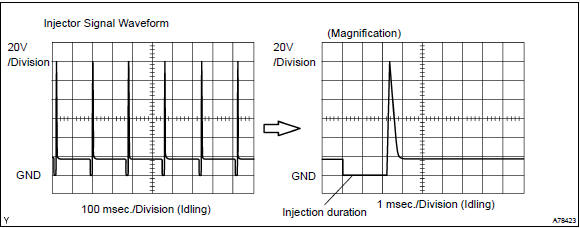
Monitor description
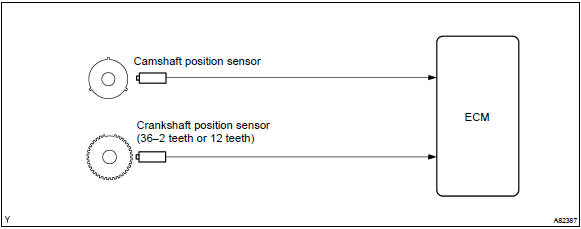
The ecm illuminates the mil if the misfiring rate exceeds a threshold value and could cause emissions deterioration.
The ecm will illuminate the mil when the percent misfire exceeds the specified limit per 1,000 engine revolutions.
One occurrence of excessive misfire during engine start will set the mil. Four occurrences are required to set the mil 1,000 revolutions after engine start. (2 Trip detection logic) the mil blinks when ”percent misfire causing catalyst damage” per 200 revolution met 3 times (1 time if the engine rpm is in high speed range). (Mil blinks immediately)
Monitor strategy
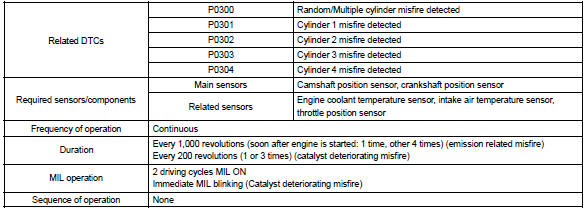
Typical enabling conditions
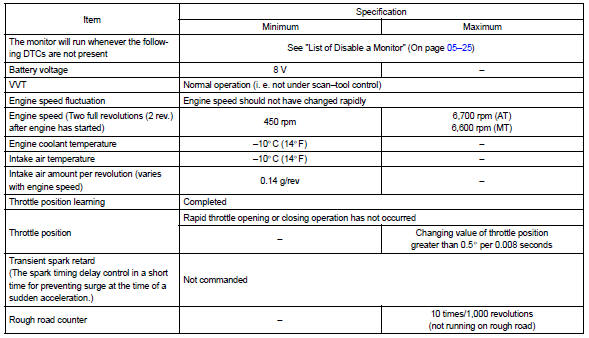
Typical malfunction thresholds

Wiring diagram
Refer to dtc p0351 for the wiring diagram of the ignition system.
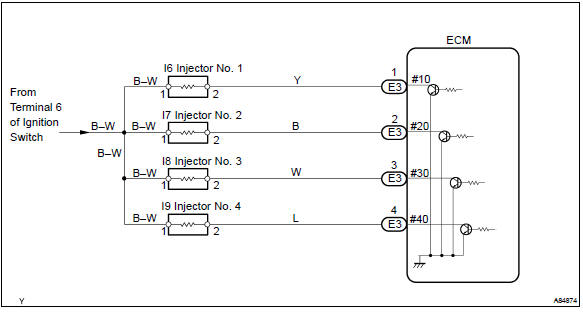
Other materials:
Skid control sensor
Replacement
Hint:
replace the rh side by the same procedure as the lh side.
1. Remove rear wheel
2. Remove rear brake drum sub–assy
3. Disconnect skid control sensor wire
Disconnect the skid control sensor wire connector from
the skid control sensor.
4. Remove rear axle hub & ...
Circuit description
The fuel trim is related to the feedback compensation value, not to the basic
injection time. The fuel trim includes
the short–term fuel trim and the long–term fuel trim.
The short–term fuel trim is the short–term fuel compensation used to maintain
the air–fuel ratio at stoichiomet ...
Entire combination meter does not operate
Wiring diagram
Inspection procedere
1 Check fuse
Check that continuity exists of dome fuse.
check that continuity exists of gauge fuse.
check that continuity exists of am1 fuse.
2 Inspect combination meter assy
Check continuity.
Disconnect the ” ...


